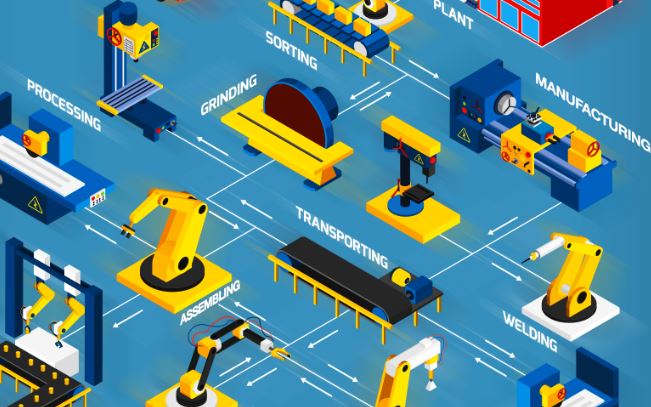In the recent past, factory automation has been witnessing several changes, thanks to technological advancement that has led to a seminal improvement in the operations. There has been more effective in the factory processes along with higher reliability and a conspicuous improvement in the quality of the output as well. With the coming in of intelligent sensors and universal connectivity, the necessity for operator intervention in manual settings or in open control loops is becoming increasingly lesser while closed-loop controls too, is changing.
The framework that drives these changes is the Internet of Things concept or IoT that is creating a flood of new technology. IoT is the connection of uniquely identifiable electronic devices using the Internet “data plumbing,” including Internet Protocol (IP), Web services, and cloud computing. With the onset of IoT, factory automation has been witnessing a sea of change thanks to the several new trends that IoT is heralding in.
In factory automation, IoT uses technology to streamline, collapse, and create system architectures that are more affordable, responsive, and effective. The goal is frictionless communications and interaction from manufacturing field input/output (I/O), including sensors, actuators, analyzers, drives, vision, video, and robotics, for increased manufacturing performance and flexibility. Wireless IP devices, including smartphones, tablets, and sensors, are already being used in manufacturing.
The IP-enabled factory automation architecture is now distributing more functions into new breeds of powerful industrial controllers and sensors/actuators with embedded processors, eliminating the need for middle-level software that is cumbersome, expensive, and difficult to maintain. Along with intelligent sensors and machines, IoT encompasses cloud computing, analytics, Big Data, mobility, and universal visualization. Improved business performance, production efficiency, and asset optimization remain the core objectives for manufacturers to implement this technology.
The benefit of having IoT on the factory floor is the ability to constantly monitor production data. While the machines in an automated factory are becoming as efficient as they can be, by collecting production data, room for improvement can be found in the system as a whole, rather than at each individual machine or station. A further benefit is the ability to monitor and troubleshoot the manufacturing process remotely at any time because of the constant connection to the Internet.
Ethernet and wireless networks will form the basis of the IoT architecture and, fortunately, many specifiers are already familiar with their use in production equipment. In general, plant floor sensors, devices, machines, and systems will be required to transmit their data to the cloud computing platform for analysis and then be capable of accepting real-time feedback from the analytical engines for performance improvement.
Companies too are fast adapting to the power of technology. Some like Mitsubishi Electric, have proposed innovative, state-of-the-art concepts that integrate technology and innovation to bring changes for the better. Its e-F@ctory has been developed with the aim of reducing production costs across the board, from development and manufacturing to maintenance, utilizing highly advanced information technologies to optimize factories and support production systems of the future. e-F@ctory is a solution for manufacturing, enabling the overall total cost of development, production, and maintenance to be reduced through the utilization of FA and information-processing technologies that continuously support customer improvement activities.
FA and IT data communication technologies aim to draw out the full potential of a plant and is flexible to changes, operating rate increase, lead-time reduction, quality improvement, cost reduction — the issues that the manufacturing industry constantly faces. They connect production equipment directly to an MES and further on to a higher IT system.
Mitsubishi Electric not only offers vertical integration with its MES Interfaces but also offers horizontal hardware integration of all its automation products on the shop floor. This is achieved and designed around the IQ Platform, which is a consolidated automation platform bringing all aspects of automation onto one main programmable automation controller. The design highlights the integration of controllers, CNCs, Robots, HMIs, engineering environment, and networking, hence resulting in reduced TCO.
The implementation of a complete IoT concept for a factory is costly and work-intensive but the benefits are substantial. The bottom-line goals of improving productivity, product quality and return on investment are recognized.


Authored by Mr. Sunil Mehta, General Manager – Automotive Business Development Department & Mr. Milind Gokhale, Senior Manager, e-F@ctory & Promotions, Factory Automation & industrial Division, Mitsubishi Electric India Pvt. Ltd.
You may like:

Related Posts
What is Open source IoT stack?
11 Best Open source IoT Platforms To Develop Smart Projects
Benefits of IoT Solutions in Pharma Sector
Letstrack wins Aegis Graham Bell Awards for Innovation in IOT
TRAK N TELL makes a major thrust on Vehicular Telematics
Top 10 Arduino Projects for Students 2019-2020